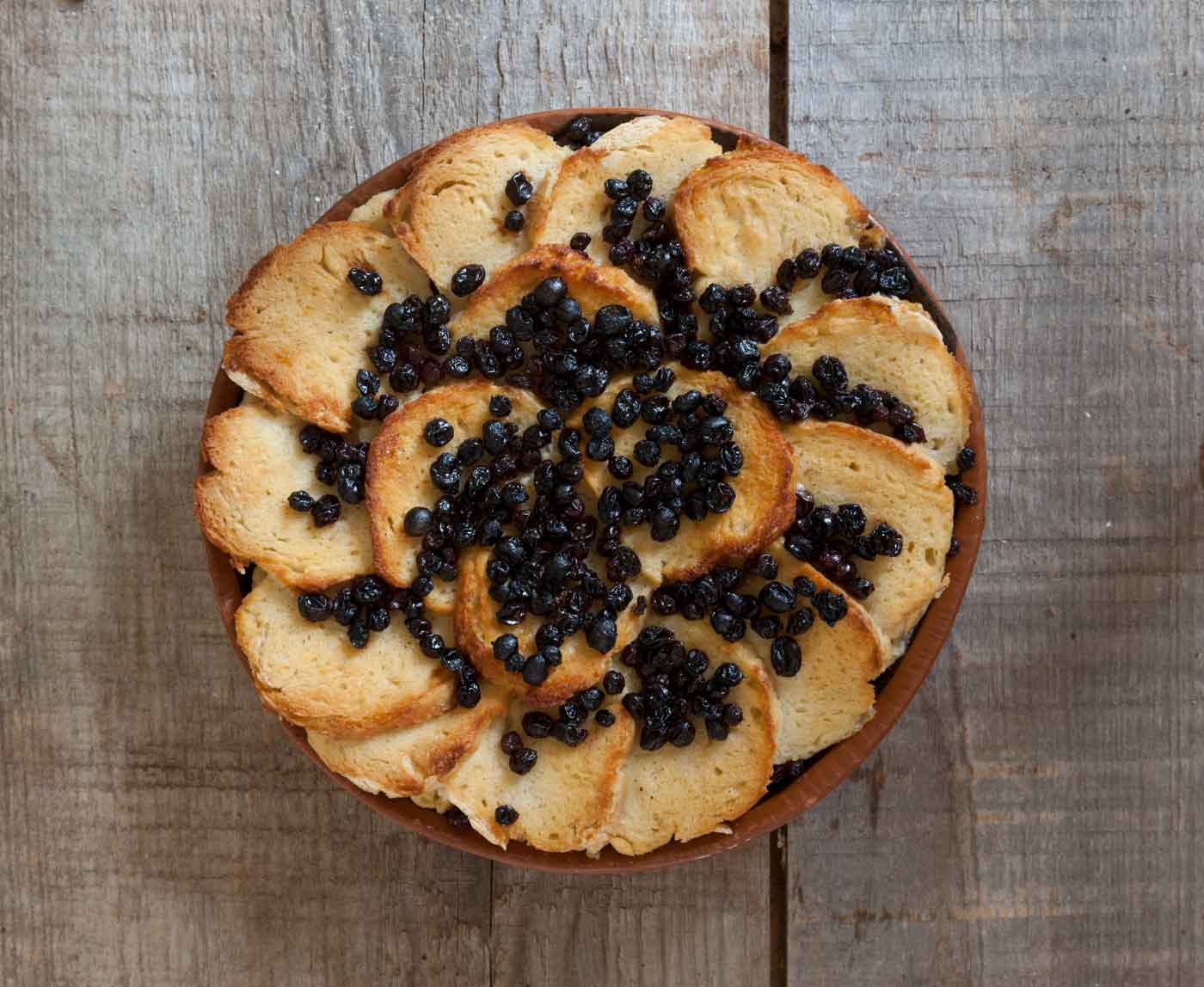Learn about this recipe from our historic foodways staff, then try it at home
Bread pudding lovers will smack their lips at this recipe. Simple but hearty, it combines basic ingredients to make a dish that is rich and satisfying. The sauce is the crowning touch.
18th Century
Cut a loaf of bread as thin as possible, put a layer of it on the bottom of a deep dish, strew on some slices of marrow or butter, with a handful of currant or stoned raisins; do this until the dish is full; let the currants or raisins be on top; beat four eggs, mix them with a quart of milk that has been boiled a little and become cold, a quarter of a pound of sugar, and a grated nutmeg — pour it in, and bake in a moderate oven — eat it with wine sauce.
— Randolph, Mary. “The Virginia Housewife”
21st Century
Ingredients
- A large round loaf of French or Italian bread
- ¼ pound of butter
- ½ cup of dried currants or raisins (currants are sweeter)
- 3 eggs
- 2 cups of milk
- ½ cup sugar
- 1 tsp grated nutmeg
- For Sauce: ½ stick butter, ¼ cup white wine, ¼ cup sugar
Instructions
- This can best be described as a layered bread pudding with a hard sauce.
- Grease a 9” pie plate or layer cake pan.
- Slice the bread rather thin with a serrated edge knife. ¼ inch thick is nice.
- In the bottom of the plate/pan make one layer of bread slices, then put some butter pats on top, then strew some currants or raisins over that. Repeat that process until your plate/pan is full.
- In a bowl whip the eggs and blend in the warm milk, sugar and nutmeg until sugar is dissolved.
- Carefully pour this over the bread mixture in the plate/pan until it soaks into the bread without overflowing.
- Bake in a 375°F oven for 25 to 35 minutes or until the bread is browned and you can touch the top and it springs back.
- For the sauce combine the sugar, wine and butter in a saucepan and stir it over medium/high heat until thick and drizzle over the finished pudding.
